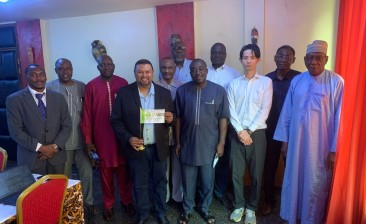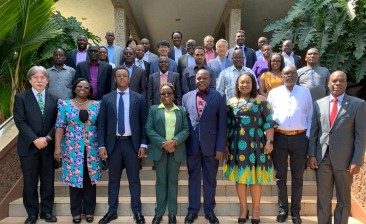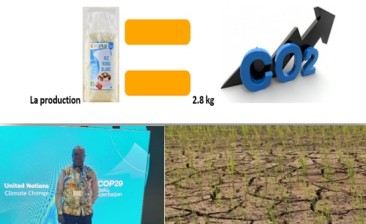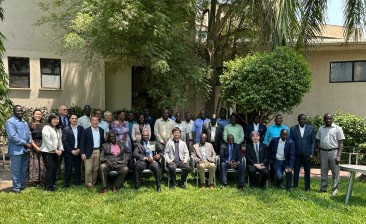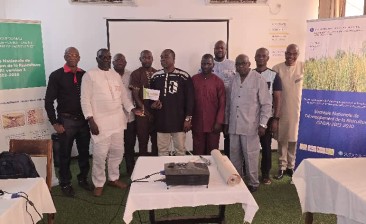Malawi, March 2023
Third CARD Working Week (WW-3) for developing NRDS-2 in Malawi
Rice provides an alternate pathway for sustainable transformation of agriculture sector in Malawi. Besides providing food security; rice farming is widely considered by policy makers as one of the avenues for facilitating transition of smallholder farmers from subsistence to commercial agriculture. Official estimates of rice production by Ministry of Agriculture reveal that about 83% of the total rice production comes from rainfed environments and the remaining 17% comes from irrigated environments. Although overall rice production has been steadily increasing in Malawi, average on-farm productivity has stagnated around 1.91 t/Ha.
To promote rice production through sustainable increases in productivity, Malawi joined the CARD initiative during its second phase (2019-2030), and set up a taskforce for drafting National Rice Development Strategy (NRDS-II). Under the guidance of the CARD, the taskforce analyzed the current situation and identified key strengths, weaknesses, opportunities, and threats faced by the country’s rice sector, during a previous working week (WW-2; 23-27 January, 2023). Based on these analyses, the NRDS taskforce intended to draw strategies for advancing rice sector development in Malawi. For this purpose, the taskforce members requested CARD Secretariat to support through a third working week (WW-3) and provide technical assistance. Major activities and outputs from the working week are summarized below.
CARD activity and the results
NRDS taskforce members organized the WW-3 at Dedza Pottary Lodge (Dedza District) between 6th and 10th of March, 2023. Regional Consultant (CARD) facilitated the working week via online. After reviewing the outputs of the WW-2, the Consultant guided the taskforce members on how to develop strategies. The taskforce members were divided into two groups. Each group worked on different segments of the rice value chain and brainstormed on the following: –
- What strategic actions are needed to use Malawi’s internal strengths to take advantage of the existing opportunities?
- What strategic actions will help minimize and avoid the threats by taking advantages of country’s strengths?
- What strategic actions will effectively utilize the existing opportunities to overcome the weaknesses in the country?
- What strategic actions will help eliminate or minimize the weaknesses to avoid the impending threats?
Keeping the principles of R.I.C.E (resilience, industrialization, competitiveness, and empowerment of the stakeholders), the NRDS taskforce members elaborated key strategic interventions along the rice value chain. These strategic interventions shall constitute the NRDS. The taskforce members established targets for implementing the NRDS, and discussed monitoring and evaluation (M&E) framework for tracking the implementation of the NRDS. While targets for overall indicators (O) and some of the resilience (R) indicators were established through discussions during the WW-3; the NRDS taskforce agreed to set targets for indicators under industrialization (I), competitiveness (C), and empowerment (E) after conducting a baseline survey. The table below summarizes targets and indicators for the NRDS implementation: –
| Indicator | Targets | Data Source/s | Methodology |
| O1:
Production |
311,000 MT | · Agro-Economics Survey Offices
· Department of Crops Development (DCD) |
Production data for each ecology should be collected and added up to reach the national figure. |
| O2:
Area Harvested(cultivated) |
124,400Ha | · Agro-Economics Survey Offices
· DCD |
Production data for each ecology should be collected and added up to reach the national figure. |
| O3:
Yield |
2.5MT/Ha | · Agro-Economics Survey Offices
· DCD |
The average National yield level was calculated by dividing the National total quantity of rice harvested (MT) by the National Total area (Ha) harvested with paddy. |
| O4:
Self Sufficiency |
100% | · Data from the Ministry of Trade and Industry
|
The team used the following formula for calculating Self-Sufficiency (SS)= {Qty produced / (Qty produced + Qty imported – Qty exported)} |
| R1:
Area under Irrigation |
8000Ha | · APES Data from Agro-Economic Surveys | Extracting the figure directly from Round 3 Main APES data file. |
| R2:
Quantity of high-yielding seeds |
5000MT | Seed Services Unit of DARS, MoA | Summation of quantities of seeds produces for each resilient variety.
|
| I1:
Level of industrial mills |
To be established | · Department of Crops Development.
· Mill owners |
Calculated the capacity ratio using the following formula:
= (installed capacity of medium and large mills/Installed capacity of all functional mills) |
| I2: Mechanization ratio | To be established | · DCD,
· District Agriculture Offices (DAOs) |
Summation of machines used for rice production in rice-producing areas |
| C1:
Market share of local rice |
To be established | · Retail shops selling both imported and locally produced rice. | Summation of rice procured and sold by retail shops
|
| C2:
Qty of high-yielding seeds |
5000MT | · Seed Services Unit of DARS | Added-up quantities of various high-yielding varieties and obtained a sum |
| E1:
Farmers’ accessibility to financial services |
To be established | · Rice farmers | Simple analysis to get a percentage
|
| E2: Farmers’ accessibility to technical services | To be established | · Rice farmers | Simple analysis to get a percentage
|
| Prevailing Prices for Rice | To be established | · Retail shops | Simple analysis to generate the Mean Price |
Way forward
With the help of CARD’s regional consultant, the NRDS taskforce will draft the NRDS document. The draft will then be shared by the NRDS focal person with the management committee of Ministry of Agriculture which oversees the agendas under Agriculture Sector Working Group for an internal validation of the NRDS document. Upon successful internal validation and approval, the draft document will be shared with wider stakeholders for their review and inputs.

